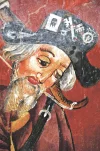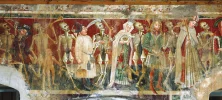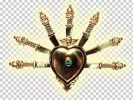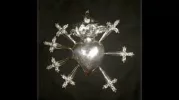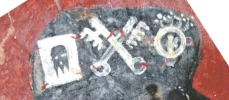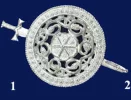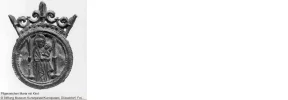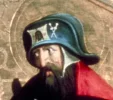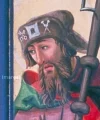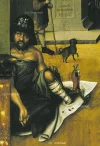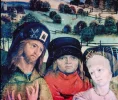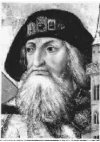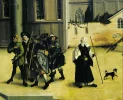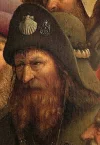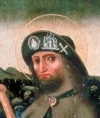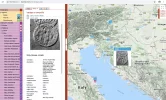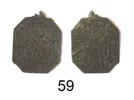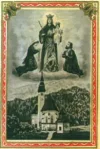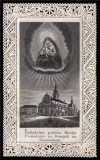caminka
Veteran Member
- Time of past OR future Camino
- see signature
there are a few pilgrims depicted on late medieval frescoes in and close around slovenia. one of them is in Beram, Istria (close to where the white truffles come from), in a little church of sv. Marija na Škriljinah. it was frescoed in 1474 by Vincenz iz Kastva, an almost local painter. it forms part of the Dance of Death, a motif that spread around europe after the black death of the 14C.
the depictions are quite detailed. the pilgrim is a beggar with a staff and half a leg replaced with a wooden pole, he is wearing a black shoulder bag and a purple tunic. on the head he has a hat with tree pilgrim badges sewn on with a red thread. the left one is the Veil of Veronica from Rome, the middle one are the Keys of st Peter, also from Rome. it's the right badge that is giving me problems. it's a circle with three swords/crosses/?. is it also from Rome? I searched the google but nothing similar came up. anyone seen a similar badge somewhere?
the depictions are quite detailed. the pilgrim is a beggar with a staff and half a leg replaced with a wooden pole, he is wearing a black shoulder bag and a purple tunic. on the head he has a hat with tree pilgrim badges sewn on with a red thread. the left one is the Veil of Veronica from Rome, the middle one are the Keys of st Peter, also from Rome. it's the right badge that is giving me problems. it's a circle with three swords/crosses/?. is it also from Rome? I searched the google but nothing similar came up. anyone seen a similar badge somewhere?
Attachments
Last edited:


